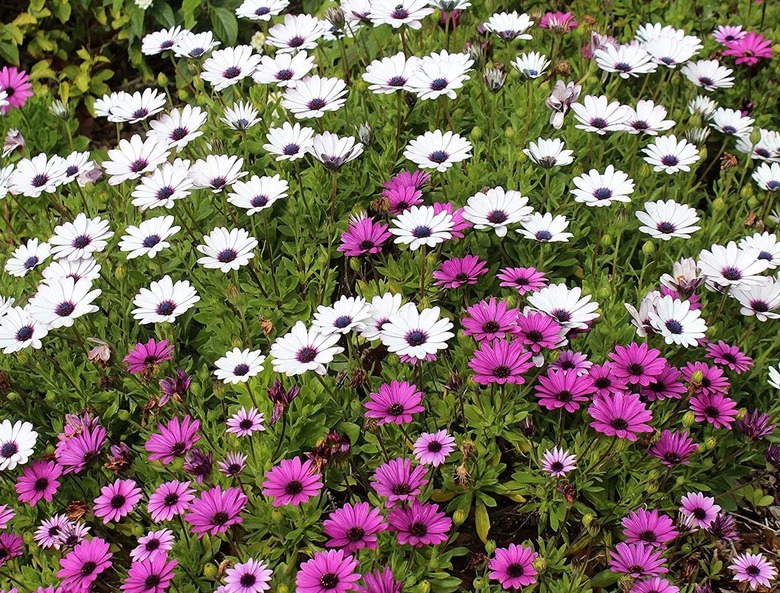How To Prune Osteospermum
We may receive a commission on purchases made from links.
Who doesn't like daisies? Osteospermum is also known as African daisy, blue-eyed daisy, or Cape daisy, thanks to its large, many-petaled blooms topping bushy foliage. This subshrub is popular as a garden bedding plant as well as for hanging baskets and patio containers. Osteospermum is a low-maintenance, easy-care plant that requires only basic deadheading to keep those flowers coming.
Meet the African Daisy
Meet the African Daisy
With so many pleasant "daisy" common names, it seems a shame to call these pretty blossoms Osteospermum. But that is the genus name that gathers some 70 species of perennials, annuals, and subshrubs. It is derived from the Greek terms for bone and seed, a reference to the extremely solid seeds the plant produces.
Most African daisy plants found in commerce are cultivars of O. ecklonis or O. jucundum. These subshrubs have stems rising from 1 to 3 feet tall; long, lean leaves; and are topped by daisy-like flowers several inches in diameter. The petals — purple, red, or orange — surround a central disk of tiny, tubular flowers.
African daisies are native to Southern Africa and can only be grown as perennials in USDA zones 10 and 11. But in fact, they bloom better in cool summer climates, lighting up the garden from spring to the first fall frost. In hot, humid regions, they die back with the hot summer weather.
Care for African Daisies
Care for African Daisies
African daisies, with their showy, colorful flowers, look as if they might require coddling, but nothing could be further from the truth. These are fairly easy plants, accepting full-sun or part-sun locations, acidic or alkaline soil, and fertile or infertile soil. They are salt and heat-tolerant.
On the other hand, the soil must be well-drained and the plants need regular irrigation. To avoid fungal diseases, it is important to keep the water off the plant leaves.
Deadhead African Daisies
Deadhead African Daisies
The reason a gardener plants African daisies is to have beds or containers filled with daisy flowers in brilliant colors. That means that keeping those flowers coming is essential. One trick gardeners use to replace wilting blossoms with new buds is to clip them off when they start fading, a practice called deadheading. Find stems where all of the flowers are spent, and clip them toward the base of the plant, just above a rosette of leaves. If only one flower is past its peak, remove that stem from the main stem.
Experts agree that deadheading African daisies is an excellent way to prolong the bloom period. This is not necessarily something that is done once a month or once a season. As you notice daisy flowers that are past the full-bloom stage, use a clean, sharp pruner to snip them off. This limits the energy the plant dedicates to seed production and increases the length of the bloom season.
